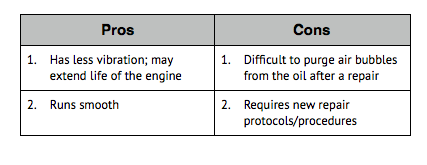Contributed by guest blogger: Pete Gustin, Valley Industries
Recent Trends
In recent years, there has been a push by diaphragm pump manufacturers to switch from traditional twin diaphragm pumps to the newer triple diaphragm designs. Advocates tout that "reduced vibrations" tops the list of benefits. However, there are others who are quick to point out the drawbacks of triple diaphragm pumps, which if not diagnosed correctly, leave some applicators swearing by the old, rattling, cranky but reliable alternative.
Pros and Cons of Triple Diaphragm Pumps

The most common "drawback" is not actually with the pump, but in proper repair procedure. With twin diaphragm pumps, you simply have to tilt the pump side-to-side to purge air bubbles from the oil after a repair. On the other hand, a triple diaphragm pump requires removing the pump from the engine and rotating it in all directions while turning the shaft by hand to ensure that all of the nooks and crannies inside all three chambers get filled properly with oil. Not following this procedure can cause diaphragms to fail quickly or, worse yet, to make the oil milky even though the diaphragms are fine, leaving you baffled and frustrated.
So next time you’re looking for a new pump be sure to take advantage of the benefits of new technology, but don’t forget to change your old repair habits.

.png?width=280&name=SameDayShippingGuarantee-New%20(1).png)



